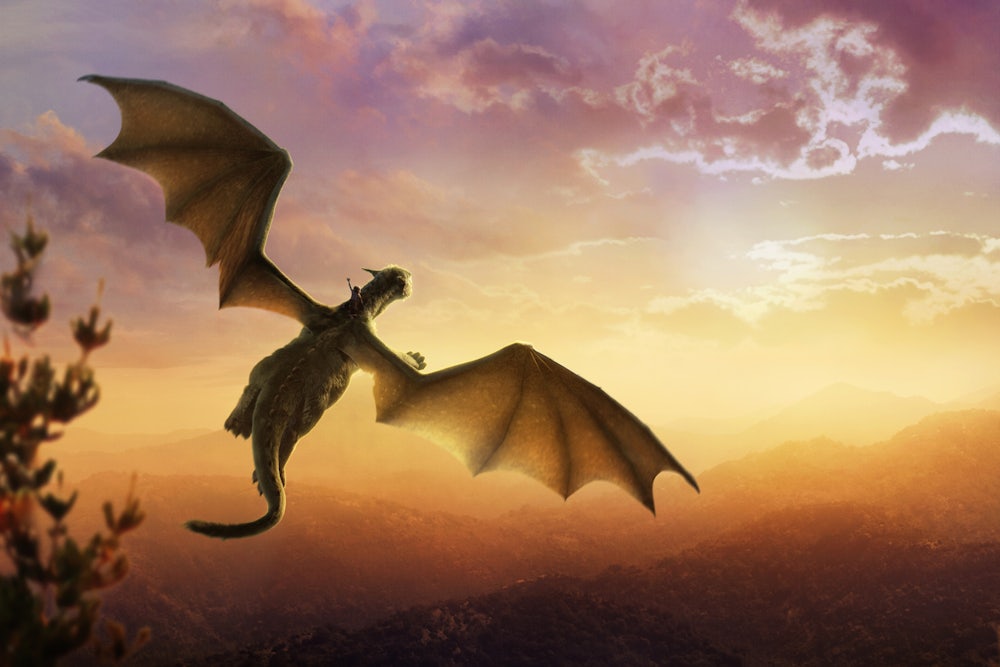Pete’s Dragon is a film so well-done, heartfelt, and winsomely
sincere that it almost feels like a waste. Directed by David Lowery (Ain’t Them Bodies Saints), it is a
warm-spirited charmer that provides the uplift of nostalgia without the thorny
complexity of reality. It’s the best possible movie to be made about a boy who
has been raised in a forest by a dragon. There is so much here to look at and
take in, you forget that all of this is in service of reviving an old Disney
property, to sell some toys and add some multi-platform scalability to a new
franchise. Pete’s Dragon is a magic
trick to distract you from what it really is, and just because filmmakers have
convinced themselves they’re doing something larger than that doesn’t mean that
you be taken in by them.
Look, I know movies are corporate products, with budgets, line-items, and boardroom projections to meet. It might seem particularly churlish to focus on these things with a film that tries so hard to elevate and inspire, but that’s part of the problem with Pete’s Dragon: It works and works to move us because there’s an empty story at its core. The plot feels almost like an old Dogme obstruction: Can you make a touching story about a dragon in the woods of modern-day Portland who raises a small boy amongst loggers and conservationists? If Lowery and his crew can pull this rabbit out of their hat, isn’t it fair to ask whether these powers should be used for something more valuable than to resuscitate a dead Disney brand? While Pete’s Dragon is never unpleasant, the fact that it exists sort of is.
2016 is proving to be the year of Spielbergian ‘80s vibes, with Jeff Nichols’s Midnight Special, Netflix’s Stranger Things, and now this, which feels less like an homage and more like a Gus Van Sant’s Psycho shot-for-shot recitation. In a terrific opening sequence, Pete is lost in the Oregon forest after the death of his parents and, in a very unlike-Spielberg move, we see the dragon himself saving Pete before the opening credits. Cut to six years later—the events of the 1977 film have been bumped here to 1982—and a kindly park ranger (Bryce Dallas Howard) discovers Pete, who says he has been raised by a massive green creature that sounds suspiciously like one the ranger’s dad (Robert Redford) claims to have come across in the forest decades earlier. This would all be fine and good, we could all just live together happily with Pete and park rangers and his dragon, but the movie needs a plot, so here comes Gavin (Karl Urban), a local logger who not only wants to knock down the whole forest but also shoot any animal within 100 miles if it. The movie needs Gavin because otherwise there would be no conflict, so Gavin dutifully makes every bad decision at every possibly junction in order to maximize the difficulties our heroes have in finding happiness. (Seriously, if someone would have just given Gavin some Trail Blazers tickets at the beginning of the movie and sent him off, the movie would be 20 minutes long and mostly about Ron Howard’s daughter giving a wayward kid a bath before they go play checkers in a cave with a friendly dragon.)
I’m being unnecessarily snarky about Pete’s Dragon because, well, it needs a little snark. Something that’s often lost about Spielberg’s ‘80s movies is that they’ve got rough edges, particularly when it comes to domestic life. In E.T., Eliot’s family is messy, chaotic, and not particularly functional; a bunch of latchkey kids hiding an alien from their overworked and exhausted single mother. In Poltergeist and Gremlins, two movies produced by Spielberg and clearly molded in his image, the patriarchs of the families in the film are distant, deeply misguided people. In Gremlins, the whole town is secretly coming apart at the seams before the monsters come; Close Encounters of the Third Kind is entirely about a guy abandoning his children, for crying out loud. But there is none of that here. Pete’s Dragon is pure nostalgia, a re-conjuring of a period without ever engaging with it. In this 1982, everything was simple and pure: Good people were good, bad people were bad. Wasn’t everything better back then? Well, if you actually go back and watch a Spielberg film, you know that’s not what life was like in 1982, and attempts to pretend otherwise reveal the real agenda here: To spark gauzy memories in the minds of parents. It’s cheap nostalgia, and the fact that it’s well done doesn’t make it any less cheap.
Thus,
you have an empty shell of a movie that looks pretty and is calculated for
maximum waterworks. It does so with considerable skill, and I don’t think
Lowery’s heart is in the wrong place here. It is not a movie that you leave
angry or cheated. It’s true that the dragon himself never stops feeling like a
CGI cartoon in an otherwise practical-effect recognizable universe, but I
suspect that’s a problem inherent in trying to make a dragon furry and cuddly
while still having him fly over a realistic Oregon forest .Mostly, the movie
feels like a rock coated in cotton candy, a shiny object that simulates
human-type emotions but never truly earns them. It got me excited to see what
the obviously talented Lowery will go do next, now that has proven he can jolt
some life into even the most moribund, defunct franchise. How will he spent the
capital he earned by pulling this off? Oh, I see: He’s writing and directing another Peter Pan reboot. Perhaps this is
was the direction he had wanted this to go all along. Perhaps.
Grade: C+
Grierson & Leitch write about the movies regularly for the New Republic and host a podcast on film. Follow them on Twitter @griersonleitch or visit their site griersonleitch.com.
